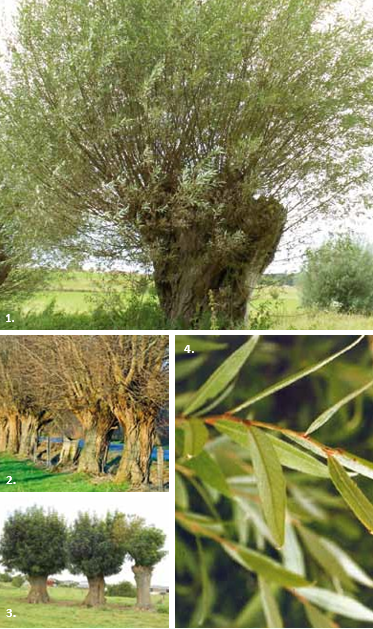Salix alba

Salix alba
Pollarded willow
Kopfweide
Kappweed
Saule têtard
Size:
Pollarded willows are formed by the regular pruning of young branches at the same height (whittles) at intervals of several years. The young shoots were formerly used for basket weaving or in wine-growing areas for tying up the vines.
Leaf:
In the course of time the trees develop the typical shape of the head, as rot (decay) and cavities have developed at the interfaces.
Flower/fruit:
Especially in wet meadows, along streams and rivers we find areas rich in pollarded willows, as the willows have high demands on the water supply.
Wood:
Neglecting the care of pollarded willows causes the branches to "shoot" too high and too heavy into the sky, so that they eventually collapse under the load. This usually spells the end for pollarded willows.
Trivia/Use:
From an ecological point of view, the maintenance and preservation of pollarded willows is very sensible, as old pollarded trees in particular are an interesting habitat for numerous insects and other small animals. Many rare birds, such as little owls and wrynecks, but also bats find nesting opportunities and shelter here.



